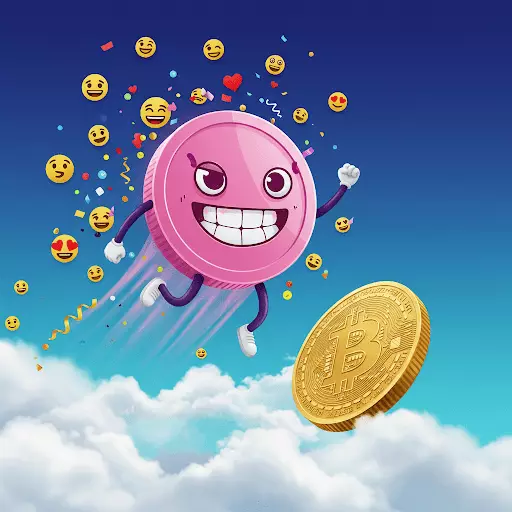In recent years, the cryptocurrency landscape has dramatically evolved, giving rise to various digital assets designed with unique narratives and purposes. Among these are meme coins, which have surged in popularity due to their quirky branding and community-driven nature. However, recent discussions highlight a more strategic intersection between politics and cryptocurrency, suggesting that these tokens could potentiate changes within the political framework itself. Arthur Hayes, the former CEO of BitMEX, has particularly made bold statements about the future of the TRUMP meme coin, predicting it could outperform traditional giants like Bitcoin.
Hayes’ assertion that the TRUMP coin will thrive as political sentiment improves is not entirely unfounded. The TRUMP token was launched amidst a wave of political emotion during Donald Trump’s inauguration, quickly capturing the attention of crypto enthusiasts and becoming one of the top meme coins by market capitalization. However, after an explosive peak at $75, it witnessed a significant downturn, which saw its value decline to under $20. This volatility, commonplace within the crypto sphere, raises questions about the sustainability of meme coins as political instruments.
What truly sets TRUMP apart is its potential utility in political campaigning and advertising. Hayes argued that as politicians recognize the power of meme coins, we may witness a surge in their adoption during electoral cycles. He envisions the 2026 midterm elections as a critical moment for the crypto industry, where many legislators may launch their own political meme coin projects to augment their presence in the digital realm. This speculation hinges on an understanding that these digital assets could connect politicians with younger, tech-savvy voters looking for innovative ways to engage with political discourse.
Despite the optimism surrounding meme coins, Hayes provides a dose of caution. He notes that while politicians might attempt to emulate the TRUMP token’s success, not all future projects will resonate with communities as effectively. The crux of his argument comes from recognizing that the allure of meme coins depends significantly on their cultural relevance and the charisma of the personalities behind them. As a result, while some politicians may choose to dive into this digital craze—specifically referencing figures like Xi Jinping—there’s no guarantee that their ventures will reflect the same success.
The fluctuating performance of the TRUMP coin illuminates larger trends in investor behavior. Following Hayes’ prediction, the TRUMP token enjoyed a revival, climbing 17% in just 24 hours. This sort of momentum illustrates the power of sentiment in the crypto market: a shift in perception, fueled by recognitions from influencers like Hayes, can spark renewed interest in an asset that had seemingly fallen out of favor. Nevertheless, it also underscores the volatility inherent in these digital currencies, particularly those tied to the transient nature of political figures and movements.
Furthermore, as investors engage with the TRUMP meme coin, there’s an implicit understanding that its value isn’t solely dictated by market forces. Instead, it’s largely tethered to the political climate and public opinion regarding the personas that wield them. This notion, as highlighted by Scott Melker during an interview with Hayes, posits that some tokens may exhibit characteristics resembling securities more than traditional cryptocurrencies. Here, the implication is clear: the success of a token can depend not just on traditional market dynamics, but also on the political and cultural capital carried by its associated figure.
As we look to the future, the emergence of political meme coins could reshape the landscape of cryptocurrency and its role in electoral politics. The distinct blend of entertainment and politics that these coins represent holds the potential to mobilize voter bases in increasingly innovative ways. However, the cautionary notes about community standards and equitable token distribution remind us that the road ahead will not be straightforward.
The possibilities for political meme coins like TRUMP to impact both the crypto industry and political campaigns are tantalizing. As the market evolves, so too will the ways in which we conceive of value in the cryptocurrency space—an evolution driven by the marriage of technology, culture, and politics, alongside the enigmatic nature of investor sentiment. The question remains: can political figures harness the power of meme coins effectively, and how will they navigate the intricate interplay between community trust and market volatility?

